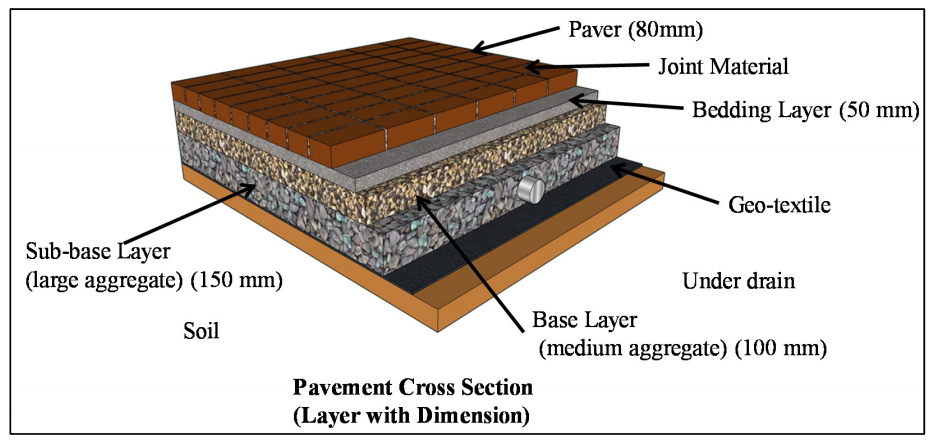Sehgal, Kirti1 and Drake, Jennifer2
1 PhD Student, Dept. of Civil Engineering, University of Toronto, 35 St. George Street, Toronto, ON, Canada, M5S1A4; kirti.sehgal@mail.utoronto.ca
2 Assistant Professor, Dept. of Civil Engineering, University of Toronto, 35 St. George Street, Toronto, ON, Canada, M5S1A4; jenn.drake@utoronto.ca
ABSTRACT
Urbanization and increased hardscape surfaces (walkways, parking lots and roadways) contribute to a range of environmental problems for urban streams and rivers including flooding, erosion, poor water quality and habitat degradation. Sustainable solutions are increasingly required by municipalities across Canada and United States as a means of providing on-site stormwater management. Masonry products like Permeable Interlocking Concrete Pavers (PICP) are a pioneer technology that offers a “green” alternative to traditional stormwater management and treatment by infiltrating stormwater directly to native soils. Much of Southern Ontario, however, has low permeability soils making it difficult to infiltrate stormwater. It has been suggested that stormwater infiltration to low permeability soils provided by a PICP systems may be substantially increased by temporarily detaining stormwater within the PICP reservoir after rain events. The excess stormwater can subsequently be discharged to receiving surface water systems by way of under drains after achieving the desired volume reductions. The University of Toronto is currently testing this hypothesis using the newly constructed PICP walkway located at the Canada Masonry Design Centre (CMDC), Mississauga, ON. This paper will evaluate the current state of literature and the construction challenges for small scale PICP installations in Ontario. It will also focus on the infiltration volumes achieved with and without temporary detention of stormwater within the PICP reservoir from summer and fall 2016. Results of this work will be used to develop best management practices for temporary stormwater detention for PICP systems over low permeability soils. By demonstrating the effectiveness of this operational practice, it may be possible for PICP systems to address the increasingly stringent on-site stormwater management criteria required by Canadian municipalities.
096



